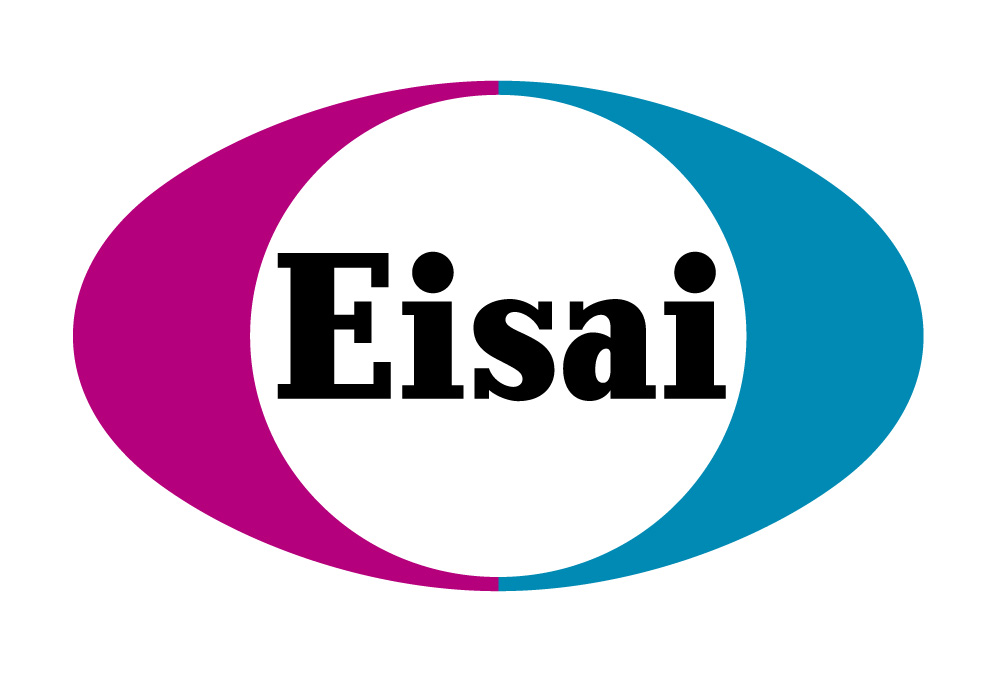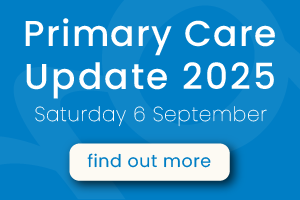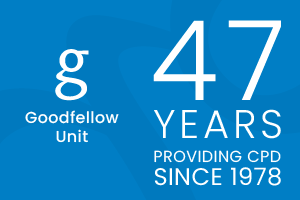Lemborexant , is a dual orexin receptor antagonist (DORA) indicated for the treatment of insomnia in adults aged 18 and over, targeting both sleep onset and maintenance. Dayvigo® is currently available for pharmacies to order through their usual wholesalers or directly from Eisai via Healthcare Logistics. Although it has been available in New Zealand since April 2025, it is not currently funded.
This MedCase looks at the use of lemborexant (Dayvigo) for insomnia.
DORAs, such as lemborexant, have demonstrated consistent efficacy in treating both sleep-onset and sleep-maintenance insomnia.
Insomnia disorder is defined by persistent dissatisfaction with sleep quality or duration, typically involving difficulty initiating or maintaining sleep, and resulting in significant distress or daytime impairment. For a clinical diagnosis, symptoms must occur at least three times per week, persist for more than three months, and not be attributable to inadequate sleep opportunity1. Insomnia frequently co-occurs with medical conditions (e.g., chronic pain), psychiatric disorders (e.g., depression), and other sleep disorders such as restless legs syndrome and obstructive sleep apnoea2.
Cognitive behavioural therapy for insomnia (CBT-I) and individualised sleep hygiene advice remain the recommended first-line treatments for persistent insomnia. Current clinical guidelines recommend CBT-I as the preferred first-line treatment. CBT-I combines practical techniques to improve sleep habits, stabilise sleep–wake cycles, reduce physiological and mental arousal, and reframe unhelpful beliefs about sleep and insomnia. Tailored sleep hygiene advice complements CBT-I by addressing individual lifestyle and environmental factors that may contribute to poor sleep.
DORAs are now considered second-line pharmacologic therapy for insomnia, following the identification and management of underlying comorbid conditions contributing to sleep disturbance1.
In older adults, benzodiazepines (BZDs) are associated with increased risks of memory impairment, falls, fractures, and avoidable hospital admissions. Similarly, Z-drugs, such as zopiclone and zolpidem, can lead to confusion and increase the risk of falls and fractures. Current recommendations advise avoiding BZDs and Z-drugs in this population.
Tania, a 65-year-old woman, has struggled with chronic insomnia for over 24 months. She reports difficulty falling asleep and frequent night awakenings, resulting in daytime fatigue and impaired concentration.
After a thorough sleep history and exclusion of other sleep and contributing medical disorders, she received tailored sleep hygiene advice, but symptoms have persisted.
She has previously tried slow-release melatonin without significant improvement and is wondering if there are any medication options available.
Taking a sleep history – a quick reminder
| Typical sleep schedule |
|
| Nature of sleep concern |
|
| Daytime symptoms and impact |
|
| Symptoms suggestive of other sleep disorders |
|
| Medical and psychiatric history |
|
| Environmental factors |
|
| Sleep hygiene and lifestyle |
|
| Previous treatments and outcomes |
|
Dual Orexin Receptor Antagonists (DORA)
DORAs such as lemborexant, have demonstrated efficacy in addressing both sleep-onset and sleep-maintenance insomnia. These agents work by inhibiting the wake-promoting activity of the orexin (hypocretin) system. Orexin-producing neurons in the lateral hypothalamus activate arousal centres in the brainstem and hypothalamus, while suppressing sleep-promoting regions in the ventrolateral and median preoptic areas. By blocking orexin receptors, DORAs reduce this wake drive, facilitating both the initiation and maintenance of sleep.
Lemborexant has demonstrated a moderate effect size of 0.36 (95% CI: 0.08 to 0.63) on patient-reported sleep outcomes, based on tools such as the Insomnia Severity Index, Pittsburgh Sleep Quality Index, Leeds Sleep Questionnaire, and sleep diaries3.
DORAs are associated with a lower risk of cognitive and psychomotor impairment compared to benzodiazepine receptor agonists and carry a low potential for abuse or physiological dependence, making them a favourable second-line pharmacologic option following behavioural approaches or in the presence of comorbidities1.
Since a lack of endogenous orexin leads to narcolepsy with cataplexy, orexin antagonists are not recommended for patients with this condition.
Pharmacologic treatments for insomnia
| Class | Example(s) | Efficacy | Key benefits | Risks/Contraindications |
| DORAs | Lemborexant, Suvorexant | Moderate to large ↓ latency + ↑ TST | Sleep onset + maintenance; less next-day grogginess | Contraindicated in narcolepsy; avoid CYP3A4 interactions; not funded. |
| Benzodiazepines | Temazepam | Moderate (0.38–0.58) | Effective sleep induction | Dependence, falls, memory issues in the elderly; subsidised (eg, Temazepam). |
| Z-drugs | Zopiclone | Moderate (0.47–0.58); similar to BZDs | Similar to BZDs; short-acting | Falls, confusion in older adults; limited duration advised. Widely used; caution in older adults. |
| Sedating antidepressants | Doxepin, Trazodone | Modest (0.30–0.52) | May suit comorbid depression/anxiety | Anticholinergic effects, falls, orthostatic hypotension. Off-label, limited availability. |
| Melatonin receptor agonists | Melatonin | Small (0.13) | Minimal adverse effects; good in older adults | Modest effect size; not helpful for maintenance insomnia. Circadin available OTC. |
| Antihistamines (H1) | Diphenhydramine, promethazine | Limited/inconsistent | Sedative effect | Tolerance; cognitive impairment; dry mouth, constipation. Available OTC; not generally recommended. |
(From Management of Insomnia and Comparative short-term safety and efficacy of hypnotics: A quantitative risk-benefit analysis)
Lemborexant dosing and administration
The usual starting dose is 5 mg once nightly, taken a few minutes before bedtime, with at least 7 hours remaining before planned awakening.
- If the 5 mg dose is well tolerated but insufficient, it may be increased to a maximum of 10 mg once daily.
- Taking lemborexant with or soon after a meal can delay sleep onset.
- Treatment should use the lowest effective dose for the shortest duration clinically necessary.
Pharmacokinetics
- Lemborexant is rapidly absorbed, reaching peak plasma concentration within 1 to 3 hours.
- It is primarily metabolised by cytochrome P450 (CYP) 3A4.
- Concomitant use of moderate or strong CYP3A inhibitors or inducers should be avoided (see interactions).
- The effective half-life is approximately 17 hours for the 5 mg dose and 19 hours for the 10 mg dose.
Evidence overview
In a phase III trial involving 1006 participants aged 55 and older with insomnia, patients were randomised to receive lemborexant (5 mg or 10 mg), zolpidem extended-release (6.25 mg), or placebo for one month at bedtime. Polysomnography measured sleep outcomes. Before treatment, the average time to persistent sleep was about 45 minutes. After four weeks, this reduced to 25.8 minutes with lemborexant 5 mg, 22.8 minutes with lemborexant 10 mg, 37.1 minutes with zolpidem, and 36 minutes with placebo. Sleep efficiency improved, translating to an increase in total sleep time of around 60 minutes5. These improvements were demonstrated to appear within a week and have been documented to last for up to a year with nightly use.
In another study by Chepke et al.,6 treatment with lemborexant improved both night-time insomnia symptoms and daytime functioning, supporting its potential role in individuals experiencing daytime impairment related to chronic insomnia. Data relating to shift workers and jet lag is lacking.
Interactions
- Avoid alcohol and other CNS depressants (eg, benzodiazepines, opioids, tricyclic antidepressants) while taking lemborexant due to increased risk of additive sedation and daytime impairment. Dose adjustments to concomitant medications may be required. CNS depressant effects can persist for several days after discontinuation.
- Avoid co-administration with moderate or strong CYP3A4 inhibitors (eg, antiarrhythmics, azole antifungals, macrolides, protease inhibitors).
- The maximum recommended dose is 5 mg when taken with weak CYP3A4 inhibitors (eg, fluoxetine).
- Avoid use with CYP3A4 inducers (eg. antiepileptics, St. John’s wort, barbiturates) as they may reduce
lemborexant effectiveness.
It is recommended to consult the New Zealand Formulary interactions calculator for guidance on drug interactions.
Contraindications and cautions
- Contraindicated in patients with narcolepsy.
- Chronic lung disease: Lemborexant should be avoided in patients with sleep apnea (particularly FEV1 <30%), chronic obstructive pulmonary disease, or other causes of compromised respiratory function.
- Hepatic: The maximum recommended dose of Dayvigo is 5 mg in patients with moderate hepatic impairment. Contraindicated in patients with severe hepatic impairment.
- Renal: No dose adjustment is required in patients with mild, moderate, or severe renal impairment; however, clinical monitoring and caution are advised.
- Abuse potential: Lemborexant has the potential for abuse. Prescribers should exercise caution when prescribing for patients who are at risk of medication abuse. However, studies investigating physical dependence with chronic administration have been reassuring, suggesting, at this stage, that lemborexant does not produce physical dependence.2
- Lactation: Lemborexant has not been studied in pregnant or breastfeeding patients, although no adverse effects were seen in animal studies7.
Side effects and monitoring
Behavioural change, depression and suicidal ideation
Suicidal ideation or behaviour occurred at a slightly higher rate in patients taking lemborexant compared to placebo (0.3% for 10 mg, 0.4% for 5 mg, vs. 0.2% for placebo). Given that intentional overdose is more common in this population, it is recommended to prescribe the lowest feasible number of tablets at a time to minimise risk.
Any new or worsening behavioural symptoms should prompt immediate and thorough clinical evaluation.
Since insomnia can be a symptom of underlying medical or psychiatric disorders, treatment with lemborexant should only begin after careful assessment of the patient.
If insomnia does not improve after 7 to 10 days of treatment, underlying psychiatric or medical conditions should be investigated. Worsening insomnia or new cognitive or behavioural changes during treatment may signal an unrecognised disorder and require prompt attention.
Complex sleep behaviours
Rare but serious adverse effects include sleep paralysis, hallucinations, vivid and disturbing perceptions, cataplexy-like symptoms, and complex sleep behaviors (eg, sleepwalking, driving, sex or cooking while not fully awake)7.
These events can occur in hypnotic-naïve as well as in hypnotic-experienced persons. Patients usually may not remember these events. These may occur during the first or any subsequent use.
The medication should be discontinued if complex sleep behaviour occurs.
| Placebo (n=528) | Dayvigo 5 mg (n=580) | Dayvigo 10 mg (n=582) | |
|
Nervous system disorders: Somnolence Headache |
1.3% 3.4% |
5.0% 5.9% |
8.2% 4.5% |
|
Psychiatric disorders: Nightmare or abnormal dreams |
0.9% |
0.9% |
2.2% |
(From: DAYVIGO Data Sheet Version 1)
Somnolence and headache were both more frequent in lemborexant-treated patients compared to placebo.
In clinical trials, excessive somnolence was reported in 6.6% of those taking 5 mg, 10.5% at 10 mg, and 1.6% in the placebo group.
Like other sleep-promoting drugs, lemborexant may impair daytime wakefulness even when used as prescribed, affecting the ability to drive and use machines. Prescribers should advise patients about the potential for next-day somnolence. Driving ability has been demonstrated to be impaired in some subjects taking 10 mg Dayvigo the following day, with individual variation.
Considering Tania’s age and the risks associated with benzodiazepines and Z-drugs, her primary care practitioner initiated Dayvigo 5 mg at bedtime, following a shared decision-making discussion about costs, risks, benefits, and alternative treatments.
Within a week, Tania reported faster sleep onset and fewer awakenings. After one month, her self-reported sleep quality and duration had significantly improved, with total sleep time increasing by approximately an hour.
She tolerated the medication well, without daytime sedation or other adverse effects.
She was advised to avoid alcohol and other sedatives, counselled on the potential for next-day impairment—particularly when driving or operating machinery—and scheduled for regular follow-up to monitor effectiveness and safety.
Tania is also engaging in a CBT-I programme alongside pharmacological treatment.
General advice
- Always consider underlying contributing factors—a comprehensive sleep history is central to the assessment of insomnia.
- All patients should receive general sleep hygiene advice. The Twenty Winks Sleep Questionnaire helps tailor advice, providing patients a free personalised sleep plan.
- A free New Zealand specific online course is available through Just a Thought: Managing Insomnia course
- Sleep apps may be useful tools
Key points
- Use CBT-i and individualised sleep hygiene as first-line strategies for insomnia. The twenty winks sleep questionnaire helps tailor sleep advice.
- Start Dayvigo at 5mg, and only increase to 10mg if the initial dose is well tolerated but insufficient
- Always ensure patients have ≥7 hours of sleep opportunity before taking.
- All patients require counselling regarding the risk of driving impairment, the use of machinery, caregiving for vulnerable individuals and making important decisions. This is particularly important during initiation, if under-slept, feeling sedated, or if using the 10mg dose. However, the next day, impairment appears to be less compared with other hypnotics.
- Carefully monitor elderly patients and those with hepatic and renal impairment.
- Interactions may occur with alcohol, other sedatives such as tricyclic antidepressants, and CYP3A inhibitors/inducers, including fluoxetine. Interactions should be checked before prescribing.
- Assess and counsel regarding the risk of complex sleep behaviours, and discontinue if they occur.
- Vivid dreaming may occur.
- Patients previously using other hypnotics or benzodiazepines may find that Dayvigo has a slower onset of action; however, this is generally well accepted.
- Patients should also be counselled regarding the risk of altered mental state, depression and suicidality. This should be monitored and documented at planned reviews.
- Periodically reevaluate the insomnia treatment plan if symptoms persist beyond 7-10 days.
- As a relatively new pharmaceutical prescriber, patients should be aware of emerging side effects, and ensure these are reported to CARM.
This MedCase was created Dr Danuta Amelung, BHB, MbChB, FRNZCGP, AFRACMA, Dip. Paed, PGCertWHlth, PGDipTrvMed with expert review by Tony Fernando, Consultant Psychiatrist.
References
Supported with an unrestricted educational grant from
Recognition of Learning Activities
Don't forget to log your time with The Royal New Zealand College of General Practitioners portal for recognition of learning activities.



